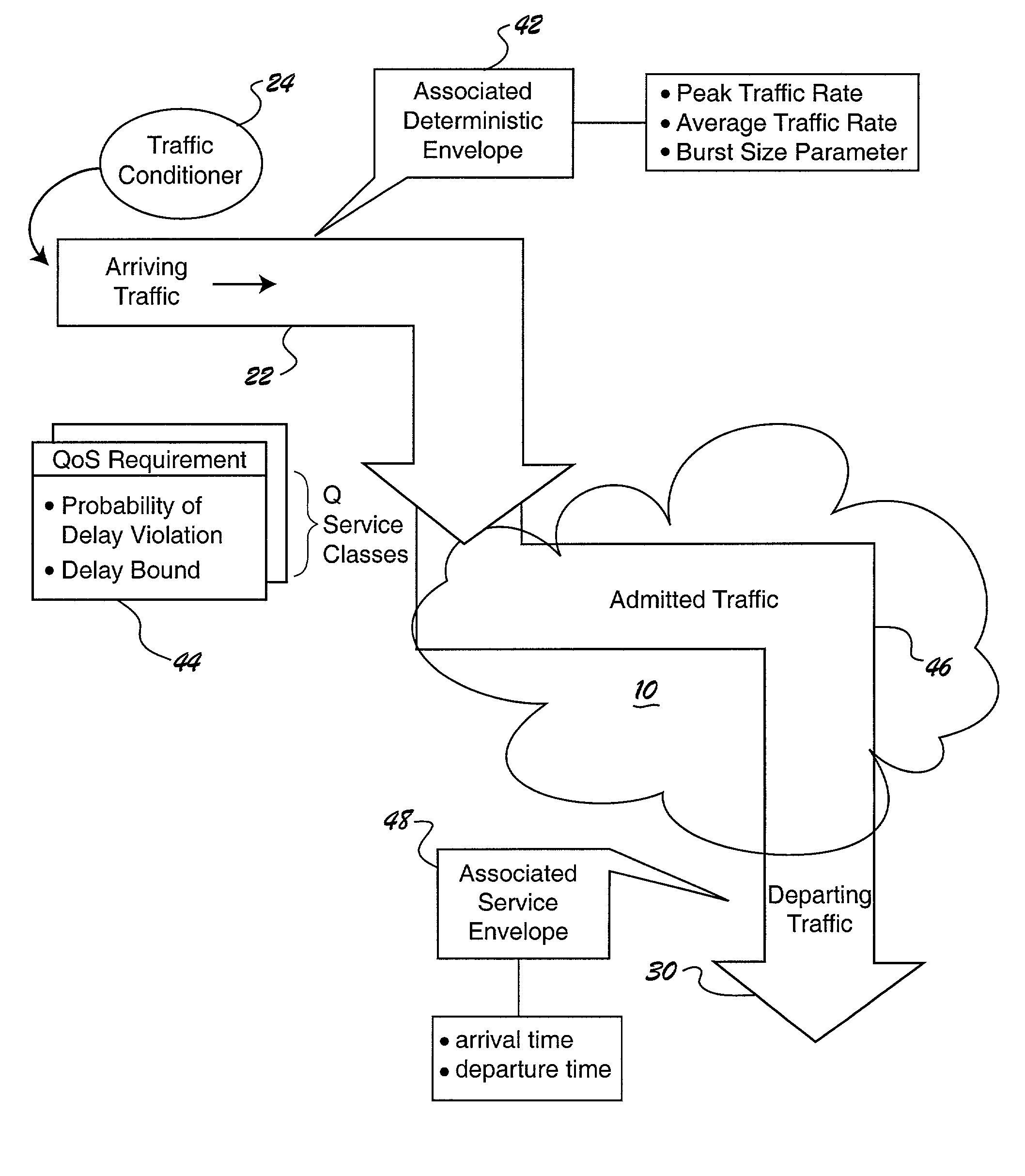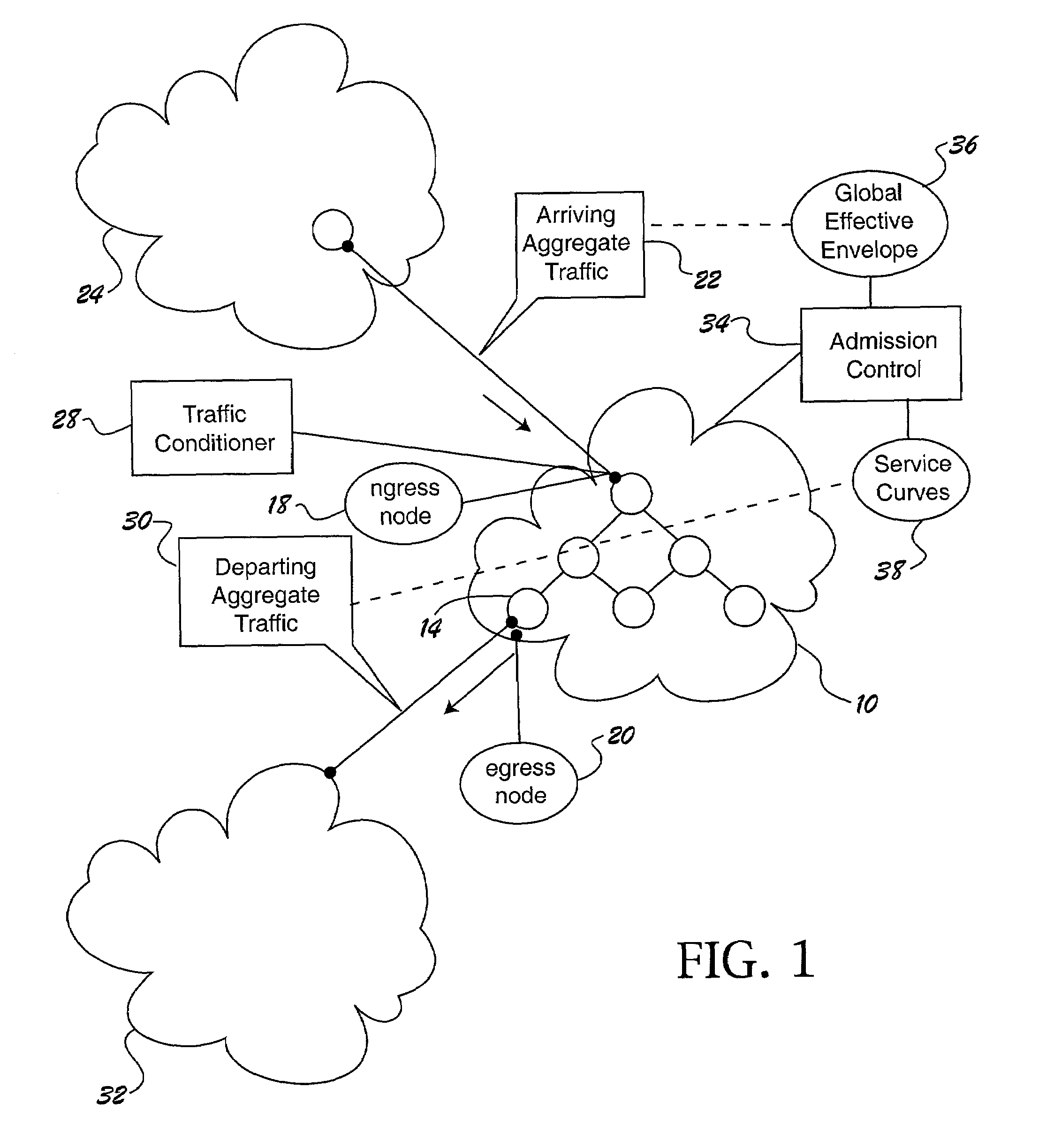Measurement-based admission control utilizing effective envelopes and service curves
- Summary
- Abstract
- Description
- Claims
- Application Information
AI Technical Summary
Benefits of technology
Problems solved by technology
Method used
Image
Examples
Embodiment Construction
[0020]A measurement-based admission control algorithm is based on the global effective envelopes of an arriving traffic aggregate and upon the service curves of the corresponding departing traffic aggregate. Such an admission control algorithm is well adapted to a variety of different network models. Although the algorithm will be principally described in the context of a multi-router network, the concepts employed are equally applicable to autonomous network systems and even switching devices. In a switching device, for example, the switch hardware / software provides for several input ports and output ports. The present invention may be used to control traffic flow among these input and output ports. Therefore, this algorithm is applicable to “networks” of different architectural granularities, ranging from single-device switches to large, multiple-device computer network domains.
[0021]Referring to FIG. 1, an exemplary network is illustrated at 10. Network 10 includes a plurality of...
PUM
 Login to View More
Login to View More Abstract
Description
Claims
Application Information
 Login to View More
Login to View More - R&D
- Intellectual Property
- Life Sciences
- Materials
- Tech Scout
- Unparalleled Data Quality
- Higher Quality Content
- 60% Fewer Hallucinations
Browse by: Latest US Patents, China's latest patents, Technical Efficacy Thesaurus, Application Domain, Technology Topic, Popular Technical Reports.
© 2025 PatSnap. All rights reserved.Legal|Privacy policy|Modern Slavery Act Transparency Statement|Sitemap|About US| Contact US: help@patsnap.com



